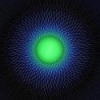I would love to have a machine that shows my brainwave state, but they are all several thousand dollars. What are some affordable alternatives?

#1
Posted 02 September 2013 - 10:44 PM
I would love to have a machine that shows my brainwave state, but they are all several thousand dollars. What are some affordable alternatives?
#2
Posted 03 September 2013 - 05:31 AM
http://www.indiegogo...-with-your-mind
http://www.kickstart...fitness-and-per
If you want to go dirt cheap you could buy a BCI based on a Neurosky chipset - the NeuroSky MindWave Mobile, the Melon, the MyndPlay brainband, etc. They only have one sensor, so aren't as accurate as the multisensor ones, but I've learned selective control of attention quite well over the past year through training with one. Also, there are more apps that support Neurosky chipset based devices than the Interaxon Muse or the Emotiv Insight.
http://www.neurosky.com/
http://www.myndplay.com/
http://www.pledgemelon.com/
As for other types of Biofeedback than EEG, for 99 USD you can get the Inner Balance iPhone plugin by HeartMath, that has an ear clip for pulse reading and an app that trains you to synchronize your heart rate variability through the control of breathing and visualizations. I got mine in the mail a few days ago and do 5-20 min per day.
Another mental trainer app for the iPhone is ReWire, which is currently free in the AppStore. It teaches you concentration skills and mindfulness. You load up your own music/audio files, listen to them, and at random intervals, the audio drops out. Your job is to tap the screen as soon as you notice the audio disappearing. If you tap too soon or too late, the device vibrates to notify you that your attention has drifted. It's a fun way of training both attention and reaction time.
#3
Posted 25 October 2013 - 05:36 PM
I find very limited use in just knowing I do pay attention or I am relaxed, the two parameters the meditation app records.
If 100-150$ isn't much money for you than go for the Neurosky Mindwave Mobile. I read a very critical review on the Mindwave and basically the noise level of a single electrode device is too high and the product is at best functioning, but not mature. Their customer service seems to be a nightmare, read reviews on Amazon. These are early days for these gadgets.
There's a Canadian company (from Vancouver, although they have an office/showroom(?) in Toronto) that will come out end of this year with a multi-sensor device for under $300, I think that could be a mature product. You'll find more on Neurogadget.com or just use a search engine. It's the company that features Nuit Blanche and CN Towner lightshows via mindreading, I think they did other landmarks like Niagara Falls, too. So, apparently not another tiny garage op.
Edited by DorianGrey, 25 October 2013 - 05:43 PM.
#4
Posted 25 October 2013 - 06:47 PM
If 100-150$ isn't much money for you than go for the Neurosky Mindwave Mobile. I read a very critical review on the Mindwave and basically the noise level of a single electrode device is too high and the product is at best functioning, but not mature. Their customer service seems to be a nightmare, read reviews on Amazon. These are early days for these gadgets.
Yep I was going to mention this one as well.
Honestly you can do biofeedback without any machinery, if you just do some mindfullness meditation and watch a certain body function, such as breathing rate, heart rate, blood pressure, temperature, etc. Obviously this is a little less fun and requires more effort, but it can be very effective if done correctly.
#5
Posted 25 October 2013 - 08:31 PM
#6
Posted 26 October 2013 - 04:44 AM
Look at Neurogadget.com for more information, that's a good starting point. I have tested one of the Neurosky devices and it has connection issues, the free apps I've seen are less than stellar.
I have owned two Neurosky devices and both are fine. However, one of them I sold to a friend who did have connection issues with it. He traced the problem down to a driver conflict in his installation of Windows 7. He does a lot of 3D animation and his whole system is set up for that purpose. He ended up buying an inexpensive laptop to use only for neurofeedback and with that one he had no connection problems. So I do not think it is a universal issue, just something to be aware and that can occur in some systems.
It's kind of fun to see it finally work but I am still not sure where I take it from there, still looking for a good neurofeedback app that helps you attain certain wave patters (alpha, delta). Also Lucid Dreaming induction would be nice, there's currently a kickstarter campaign called Luci.
I find very limited use in just knowing I do pay attention or I am relaxed, the two parameters the meditation app records.
Lucid Scribe is free, and capable of displaying all brainwave bands with its Neurosky plugin. There is also a guide there for how to take apart your MindWave headset and attach it to a headband for Lucid Dreaming purposes.
If 100-150$ isn't much money for you than go for the Neurosky Mindwave Mobile. I read a very critical review on the Mindwave and basically the noise level of a single electrode device is too high and the product is at best functioning, but not mature.
It is true that the usability is limited, but hey, it is a 100 USD device. There simply is no alternative on the end consumer market for that price at the moment - the Olimex EEG might be worth checking out, but if you are going to use an EEG without consumer friendly software then be aware that the learning curve may be pretty steep.
Their customer service seems to be a nightmare, read reviews on Amazon. These are early days for these gadgets.
There's a Canadian company (from Vancouver, although they have an office/showroom(?) in Toronto) that will come out end of this year with a multi-sensor device for under $300, I think that could be a mature product. You'll find more on Neurogadget.com or just use a search engine. It's the company that features Nuit Blanche and CN Towner lightshows via mindreading, I think they did other landmarks like Niagara Falls, too. So, apparently not another tiny garage op.
The Canadian startup is InterAxon, and their EEG headband is called the Muse - I linked to it in my previous post.
I have a Muse on pre-order and look forward to seeing what it can do, but I would not assume it is mature upon release, especially not since it is their first actual product. The InterAxon brainwave lightshow projects you mention utilized NeuroSky EEG hardware.
Honestly you can do biofeedback without any machinery, if you just do some mindfullness meditation and watch a certain body function, such as breathing rate, heart rate, blood pressure, temperature, etc. Obviously this is a little less fun and requires more effort, but it can be very effective if done correctly.
I agree. Despite being a tech geek I would even argue that the non-tech approach is more useful, as you gradually learn to become your own biofeedback monitor rather than relying on external technology. Plus you don't need to spend any money at all.
Edited by Godof Smallthings, 26 October 2013 - 04:48 AM.
#7
Posted 23 November 2013 - 02:17 AM
ps: TacticalBreather is also an app I would take a closer look at (doesn't require or use special equipment).
#8
Posted 18 February 2014 - 02:52 AM
I didn't get LucidScribe running yet, it stops at the COM selection
I'd like to try some of the neurofeedback software, Mindwave has a few more professional programs between $60-$400 on their website, including some trial versions.
Does anyone already have some experience with the PC software for Neurosky? Any recommendations, watch-outs or features to look for?
Edited by DorianGrey, 18 February 2014 - 02:53 AM.
#9
Posted 18 February 2014 - 09:54 AM
I liked MindWorkstation a lot, but could not afford/justify paying for a corporate or enterprise version to get the EEG driving feature which is the neurofeedback mechanism I really wanted.
So I bought NeuroProgrammer (brainwave entrainment program) from the same company instead (60 USD), which I think on balance is well worth the money, but it depends on what your goal is. It does not provide direct, real-time neurofeedback, but it does assess in the background how your brainwaves respond to various binaural beat or isochronic tone frequencies, so over time the sessions become more effective at inducing their intended effect.
Some people respond better to brainwave entrainment than others, so YMMV. Personally I feel that the gamma sessions have actually boosted my cognition, and low alpha sessions do make me feel relaxed and pleasant - so overall, this was a good purchase for me.
I have not tried Home of Attention, MindReflector or SmartMind, so I can't say much about those. I did try FocusPocus for the iPhone while it was open to anyone to try (these days you have to register before you can use it, but they provide partial iOS games for the MW Mobile at 5-6 USD if I remember correctly, which I have not bought). The games in FocusPocus are aimed at kids, and while I can see them being somewhat useful for kids with attention problems, they did not blow me away, so decided that was not what I was looking for.
It seems like you are using Android and Windows - that means NeuroCoach (combining Hypnosis with neurofeedback) is not available to you at the time (iOS only for now), which is unfortunate - at just 7 USD for the basic app (which includes 3 sessions targeting Focus training, 'In the Zone' (balancing focus and relaxation training) and 'Reduce stress' (targeting meditation/relaxation skills) I think it is easily the most bang for the buck. You can also in-app purchase additional sessions for Mindfulness, Willpower (getting things done) etc.
A free, simple yet effective meditation trainer for Mindwave Mobile and PC (requires an Internet connection) is Mentronome. You set the target threshold yourself and the website provides a log of your sessions so you can monitor progress over time, and change the threshold once you achieve 90% consistently at your current level. I do 10 minutes most days, focusing on the sensation of the breath at the end of the nostrils, and feel it has helped improve my consistency of concentration to some extent.
Macrotellect have been busy developing games for iOS and their own NeuroSky based BrainLink headband. Unfortunately they focus on the Chinese market and the apps are set to only work with the BrainLink. I guess they want to make sure people buy their own device, which is twice as expensive as the MindWave Mobile.
I agree the selection at present is not as great as one would like - I guess the tech is still too new and does not appeal to the masses yet.
#10
Posted 18 February 2014 - 10:00 AM
I didn't get LucidScribe running yet, it stops at the COM selection
Do you mean it freezes and becomes unresponsive? All I do to make it run is to click on the right COM port with the mouse, and then the program starts. I am on Windows XP, run LucidScribe v. 1.2.6 with ThinkGear EEG 0.9.9, so it may be related to one of those variables?
#11
Posted 20 February 2014 - 04:57 PM
Yesterday I've tried Smart Mind Research's Kit (Trial Version) and didn't get it to recognize the Mindwave, at least the trial seems to support a couple (four) of more sophisticated devices only and has a simulation module, but that's it.
Mindreflector looks interesting but doesn't have a trial version. I don't want to spend 100$ and find out it sucks. Mindworkstation is a bit expensive at 180$ and is more for people who have a lot of time to fine tune sessions (therapists? -- although, these people should use more advanced EEG units than Mindwave).
So, I will try "Home of Attention" next, there's only a trial version on the store. Maybe I'll buy the 5$ Transcend after checking how difficult exporting/importing with the free eegID Android app is, purpose is mainly to track meditation quality/progress. There are some feedback apps for meditation (HD Mynd series) but I am not sure that's actually helping to clear your mind. A realtime feedback loop is probably more advised to work on focus/attention. That would be something I'd like to work on, there are too many distractions in my life.
What exactly do you mean when you say NeuroProgrammer does not provide direct feedback? If I am using free LucidScribe and aforementioned free sources of entrainment I would probably get a similar setup?
BTW, I've done the the floating function (meditation) in the Visualizer under Games (both PC and Android) and I am getting better results. That's a direct feedback loop.
Edited by DorianGrey, 20 February 2014 - 05:05 PM.
#12
Posted 21 February 2014 - 03:21 AM
Mindreflector looks interesting but doesn't have a trial version. I don't want to spend 100$ and find out it sucks
Fully agree on both accounts - it looks interesting, but the price tag is a bit too high to take a chance without getting to try it out first. The 50 USD price tag on NeuroProgrammer 3 in combination with the fact that I had tried, and liked their more advanced MindWorkstation (but could not justify spending that much) made me pull the trigger on NP3.
What exactly do you mean when you say NeuroProgrammer does not provide direct feedback? If I am using free LucidScribe and aforementioned free sources of entrainment I would probably get a similar setup?
I should have written 'real-time feedback'. The reading of one's brainwaves proceeds in the background. NP3 tries a certain frequency of the isochronic tones or binaural beats, assesses the response level through brainwave monitoring, then NP3 tries another adjacent frequency and assesses the response for that one, etc. Eventually, the sessions you run regularly will have a database of what frequencies you have responded to best, and then the ramping up/down of that session is optimized according to those values, feeding the frequencies to which you have the best response.
Your idea with using LucidScribe means you would either have to monitor the brainwaves with eyes open (not optimal for frequencies lower than high alpha waves; the very act of monitoring the pattern is likely to cause it to change as the activation of the visual cortex and attention areas of the brain as well as any analysis/emotional reactions [likely to occur unless your ability to calm the inner voice and autonomic emotional response is very good] to the readings will definitely have an effect on the brainwave pattern), or you would have to run the session with eyes closed and then go over the data recorded with LucidScribe after the session to see your pattern and how you responded at different stages of the session.
I think your proposed method will work in a sense, and for raising beta or gamma frequencies it should be effective (as you can do that with eyes open) but it is not exactly the same as what NP3 does.
One thing I remind myself of is to not buy into the tech *too* much - after all, neither the hardware nor the software is likely to be perfect, but how we feel subjectively during and after a session is more valuable.
I agree the floating function in the visualizer is really good and that it is a direct feedback loop. I use it almost daily.
Mentronome that I mentioned is also free, less pretty than the meditation game in the Visualizer, but similar [a candle flame is lit and the sound of a flame burning plays once you pass the set minimum value for meditation], and Mentronome also gives you the option of setting the target threshold.
#13
Posted 26 February 2014 - 12:28 AM
That leaves NP3 and Mindreflector.
ps: I am getting a lot better with the floating game in the visualizer, shows that this neurofeedback concept somehow works.
#14
Posted 26 February 2014 - 02:13 PM
Interesting to hear about your progress with the visualizer. Are you using any particular technique or strategy? If so, what?
#15
Posted 28 February 2014 - 07:01 PM
#16
Posted 03 March 2014 - 11:47 AM
#17
Posted 05 March 2014 - 12:44 PM
I don't know about accuracy as in whether Emotiv's sensors and algorithm are more effective/accurate than that of Neurosky. However, due to their multi-sensor setup, theoretically they should be able to do things that the Neurosky headsets can not, for example detect anomalies and balance issues between the hemispheres, and register unique patterns in brainwave activity in various parts of the brain, etc. This is something that the Neurosky based BCI's, due to being single sensor devices, could never do.
The EPOC also has software that is trainable to your unique patterns for performing commands, which makes it a lot more useful for controlling both games and external devices. The Neurosky only has the meditation value, the attention value and the eye blink - that's it, 3 variables. Of course, it also measures the brainwave pattern at the sensor site, but these measurements have not been used as a control tool in any application I am aware of, indicating that it is probably not very useful either. While one can affect individual wavelengths (based on Lucid Scribe, alpha power reliably increases by such acts as relaxing, closing one's eyes and looking upward beneath closed eyelids, and it seems like gamma power is significantly increased when opening one's eyes after meditative type exercises, and theta sometimes seems to tag along with the gamma) it does not seem so useful for 'controlling stuff with the power of one's mind' and more specifically it is not possible to issue any complex commands this way with the Neurosky devices.
But despite having played/practiced with my Neurosky Mindwave and Mindwave Mobile quite a bit, I am unable to consistently achieve fast 'on and off' type spikes on the attention and meditation meter.
I can definitely make the attention meter go up fairly quickly to near max levels, and on good days, make it stay above 80 or even 90 for several seconds, but to then instantly 'turn attention off' to have it drop below the same level, and then perform the same kind of action again, I've not been able to do.
On occasion I am able to produce a meditation score above 80% for more than 50% of the time during a meditation session of 5-15 minutes, but not so consistently that it works for fast control of anything. It works OK as a control in MyndPlay's interactive movies, but they do not require you to turn the values on and off quickly, just to maintain the score over a certain level for a number of seconds.
The downside of the EPOC is that it uses 'wet' electrodes that require saline to work, so it takes some effort to set it up before each session, but they are currently well on the way to develop a new model called 'Insight' with dry electrodes (but not as many sensors than the EPOC). Another downside is that it seems to have even fewer apps for it than the Neurosky devices.
If I was planning to buy one consumer EEG device this year, I would wait until the Muse and the Insight have been released, and then make a decision. It is likely that the EPOC will drop somewhat in price when the Insight is introduced, so for somebody not interested in buying a Muse or Insight, then a used EPOC could be a good option.
Edited by Godof Smallthings, 05 March 2014 - 12:47 PM.
#18
Posted 11 March 2014 - 02:13 PM
But I have issues connecting the Mindwave (no problems connecting to Visualizer by Neurosky at the same time). Because I am looking for neurofeedback and not just entrainment I am not purchasing NP3 and keep looking.
Without the connection issues I would have tried the feedback function available in trial and the upgraded version of NP3 (90$ instead of $60) and probably bought the program.
#19
Posted 12 March 2014 - 04:59 AM
#20
Posted 12 March 2014 - 01:37 PM
Note that Lucidscribe now works well.
#22
Posted 14 May 2014 - 11:47 AM
Hi Yuri,
The Muse headsets for developers were sent out in April, while the consumer headsets I ordered have still not shipped, with no word from InterAxon so far as to when they estimate to do it.
I will be sure to do a mini review once I have received mine.
For now, I am still occasionally using a by now slightly defect Mindwave Mobile (for some reason the signal quality has deteriorated - makes it more of a challenge to play the games, for sure.) and the InnerBalance iPhone device from HeartMath.
If I had more cash to spare I would buy myself a new normally functioning Mindwave Mobile, as the combination of Mindwave Mobile with the NeuroCoach iPhone app - hypnosis scripts that adapt according to neuro feedback from the Mindwave Mobile - is something I really like.
#23
Posted 14 May 2014 - 12:20 PM
If you're looking for an EEG device on a budget, I think the below looks the most promising:
Should start shipping soon.
I think I will pick one up when it starts shipping as I've been looking for a decent EEG device at a good price for some time. Unfortunately the current range of products available doesn't meet my requirements without spending big $ for research/medical grade devices.
Muse looks like a nice device for neurofeedback and training purposes. Let me know how it goes
#24
Posted 14 May 2014 - 04:16 PM
Hi Godof Smallthings
I wanted to buy Mindwave Mobile but read several reviews that the headset is small and not convenient to use.
Yours is OK?
#25
Posted 14 May 2014 - 05:46 PM
It really depends what you are looking for.
You can not use the Neurosky devices for serious neurofeedback, but they are OK for rudimentary attention and relaxation training, although, as I said in an earlier comment, in my experience regular mindfulness/meditation is more effective. Without the tech, you learn to develop awareness of your own mind and body feedback without relying on any externals.
I think Open BCI does look really interesting and has potential, but my experience with open source projects is not super-positive overall. It can take a very long time for easy-to-operate end consumer software to appear, if it ever does. The enthusiasts are typically engineer types - they tend to have cool ideas and solutions, but they are often developed for other tech savvy people, and nice GUIs and usability tend to take a back seat. Hopefully this project is different, but until I've seen what becomes of it, I'll hold off purchasing.
#26
Posted 14 May 2014 - 11:14 PM
Dr. Ochs postulates that psychological or physical trauma induces such a high level of neurochemical excitement that a seizure may be imminent. In order to protect itself, the brain responds with inhibitory chemicals. One could visualize it as the neurochemical equivalent of curling up in a ball. In a protective stance, the inhibited brain has lost function, just as person curled up in a ball cannot walk or function normally in their protective posture.
Dr. Ochs postulates that these inhibitory chemicals may linger in the brain for an extended period of time (one supposes for lack of activation of the proper janitorial reuptake enzymes) or, that the brain mechanism responsible for the production of the seizure protecting neurotransmiters does not reset itself to the pre-trauma state, creating a new homeostatic state of impaired functioning.
If brain-wave training resets the neurochemistry to its pre-trauma state, such a mechanism would explain why it is helpful, and why it works with pathologies resistant to other interventions.
EEG Disentrainment Feedback
Dr. Ochs created an EEG biofeedback device which operates directly on the subjects EEG patterns through light and sound drivers. Normally in EEG biofeedback a subject must attend to, and attempt to respond to a signal which provides information about their brain wave frequencies.
Unlike traditional EEG biofeedback, in Dr. Ochs' device there is no need for the subject to be consciously in the loop or attempting to do anything. The overall brain waves respond to and match the frequency and amplitude of the signals delivered via strobe glasses and headphones. The audio and visual stimuli in turn are generated by the overall amplitude and frequency of the EEG. A computer monitors both and allows the clinician to intervene and sweep the frequencies upward or downward.
Dr. Ochs calls his form of biofeedback "EEG disentrainment feedback (E.D.F.)" (Ochs, 1993). The equipment is actually entraining the brainwave frequencies, yet he refers to it as disentrainment feedback. The disentrainment is for the hypothesized intervention of disentraining a protection mechanism gone awry, a locked in state of emergency brain functioning.
Ochs has been having remarkable results with victims of both psychological trauma and physical brain trauma. He has successfully treated victims of closed head injury, stroke, post-traumatic stress, depression, and addiction. Many of these patients had conditions which were very resistant to treatment with other interventions.
If Dr. Ochs hypothesis is true, then the EDF and all other brain wave retraining devices either activate the proper inhibitory enzyme reuptake mechanism, or they disrupt the seizure inhibition responses which have taken over as the day to day standard for neurochemical functioning.
In either case, brain-wave training would be helping because it allows the brain to reset itself to its normal unimpaired state of functioning. The brain-wave training would not be directly repairing what is impaired, but would be enabling the brain to heal itself (Ochs,1993).
The observations and speculations of Ochs, Patterson and Capel provide some insight into why such "physical therapy" for the brain may work. They illustrate why we might be as effective using brain wave training to improve some individual elements of functioning, such as memory, as well as working on broad fields of impaired functioning such as depression, head injury, addiction, ADHD, ect.."
_____________________________________________________________________
From http://www.nueva-men...Research/13.htm
I wish I could try something like this!!!!!
Another interesting section:
"Research suggestive of just such a hypothesis may be found in the investigation of cranial electrical stimulation (CES). CES is a technique which introduces the desirable frequencies by low level electrical currents applied to the cranium. The medical college at the University of Wisconsin conducted a study on a commercially available CES device, the BT-5. The purpose of the study was to determine if the BT-5 would reduce student anxiety during final exams. The unexpected results were increases in IQ by twenty to thirty points and a conclusion by the researchers that the "BT-5 (CES) stimulation appears to enhance neural efficiency..." (Ostrander & Schroeder, 1991, pp. 265-266)."
#27
Posted 14 May 2014 - 11:38 PM
It really depends what you are looking for.
You can not use the Neurosky devices for serious neurofeedback, but they are OK for rudimentary attention and relaxation training, although, as I said in an earlier comment, in my experience regular mindfulness/meditation is more effective. Without the tech, you learn to develop awareness of your own mind and body feedback without relying on any externals.
I think Open BCI does look really interesting and has potential, but my experience with open source projects is not super-positive overall. It can take a very long time for easy-to-operate end consumer software to appear, if it ever does. The enthusiasts are typically engineer types - they tend to have cool ideas and solutions, but they are often developed for other tech savvy people, and nice GUIs and usability tend to take a back seat. Hopefully this project is different, but until I've seen what becomes of it, I'll hold off purchasing.
Fair Call.
I will pick up the Open BCI when it comes available (unless something better crosses my path before then) and let you know my thoughts.
Edited by MadScientistX, 14 May 2014 - 11:38 PM.
#28
Posted 16 May 2014 - 01:42 AM
InterAxon just posted an update about the Muse.
Turns out one of the components needed from their sub contractors is back logged, which means production is stalled for another couple of weeks, which will in turn cause an estimated delivery delay of 4-6 weeks from now.
Edited by Godof Smallthings, 16 May 2014 - 01:43 AM.
#29
Posted 05 September 2014 - 01:59 AM
Good news - I now have a Muse!
So, here is a review.
Overall score: 4 out of 5
Price: 299 USD
Looks: Looks great when not worn, but when I wear it I look like a bit like a wingnut because my ears come forward when the Muse is snugly fitted around the head. This may just be me, as we all have differently shaped heads and ears.
Build Quality: The materials used look great and kind of expensive, but the headband itself is more delicate than I had imagined. For that reason, it is not an outdoors device. Interaxon delivered Muse with a sturdy hardcase to protect it from shocks, so they seem to be aware of this.
Perceived sensor quality: Excellent - very sensitive - Interaxon appear to have gone a different route than NeuroSky, whose dry sensor on the Mindwave Mobile appears to have filtered the signal very heavily before it is fed to any software. The Muse seems to be more sensitive to movement and general signal noise - but I think this is mostly a good thing - the NeuroSky probably filters out too much to be reliable for EEG purposes (this is probably because NeuroSky decided that the brain-computer interface capability was more important, seeing it more like a gaming device than an EEG).
Based on the feedback in the app Calm, which comes with the Muse, the Muse definitely appears to be more accurate than the NeuroSky MindWave in detecting subtle mind changes, but (for some applications) this comes at the price of greater noise sensitivity, so sitting very still is important.
Comfort: The Muse fits snugly around the head and feels great, unlike the NeuroSky MindWave Mobile which presses into the side of the head and gets a bit painful after 10 minutes+.
Usefulness: After just one week of daily use, the Muse has already helped improve the quality of my meditation. My scores in the Calm app show a general climbing trend, and my sessions are now on average 70% - 80% calm, whereas they started out at around 50%. Apart from the app telling me I have improved, I can actually feel it as well. The short moments of 'total calm' I experience give rise to a very pleasant feeling which is hard to describe, but really feels amazing. I am very motivated to use the Muse several times a day.
App(s): As of now, there is only one app for the Muse, developed by Interaxon themselves. It is called Calm, and it does what it intends to do - through the use of real time audio feedback, it guides the user to sit very still and calm the mind.
Overall impression: The Muse is not quite what I expected when I first supported their Indiegogo campaign - the pictures in the campaign showed two users, both of them out of doors, using the Muse. The guy was walking over a pedestrian crossing and looked like he was out exercising. The woman sat down at a table in a cafe with an iPad. But due to the Muse's sensitivity, wearing it during exercise is not feasible. And to break out the Muse in a public setting and sit down and meditate... maybe nerds like me may consider it. Other people won't.
But those caveats aside, the bottom line:
I am still REALLY happy with the Muse and the Calm app, because they are both carefully designed to help achieve my goal of improving my stillness meditation technique, and I am seeing tangible improvements in as little as a week - invaluable. Neither the Mindplace Thoughtstream, the Neurosky MindWave Mobile nor the Inner Balance sensor from HeartMath have been that effective, although the Thoughtstream effectively teaches you to sit still, the Inner Balance sensor teaches you to affect your vagus nerve and the MindWave Mobile can help improve attention. But my subjective opinion of the Muse is that it seems to be more reliable, and capable of even greater things provided app development takes off.
For meditation to have lasting effects, is has to be done every day. The Muse helps me do that.
#30
Posted 05 September 2014 - 11:05 PM
I have a more expensive neurofeedback set up but some of these newcomers (interaXon muse, Emotiv Insight) seem pretty appealing for convenience reasons. Being wireless and having dry sensors makes me think that even if the signal is less robust in some way it's probably something you could use more readily in 'post-meditation', that is in cultivating mindfulness during regular activity, which in a lot of ways is more challenging than sitting meditation. Maybe not while you're really active or anything, but if your studying or reading something, or consuming entertainment media or something, maybe it could give you a bit of a prod when your awareness grows dull.
Edited by umop 3pisdn, 05 September 2014 - 11:06 PM.
Also tagged with one or more of these keywords: biofeedback
Round Table Discussion →
Technology →
biofeedback for Lyme disease or other chronic infectionStarted by Omega 3 Snake Oil , 25 Mar 2016 |
|

|
||
Science & Health →
Brain Health →
Binaural Beats, NP3Started by Pallas , 05 Jan 2015 |
|

|
||
Science & Health →
Brain Health →
Enhancing nirHEG with hGH and/or EPOStarted by StabMe , 19 Jun 2014 |
|

|
||
Science & Health →
Brain Health →
Help Choosing Neuro/Bio-Feedback device and Software???Started by bbminded , 12 Apr 2012 |
|

|
2 user(s) are reading this topic
0 members, 2 guests, 0 anonymous users
















































